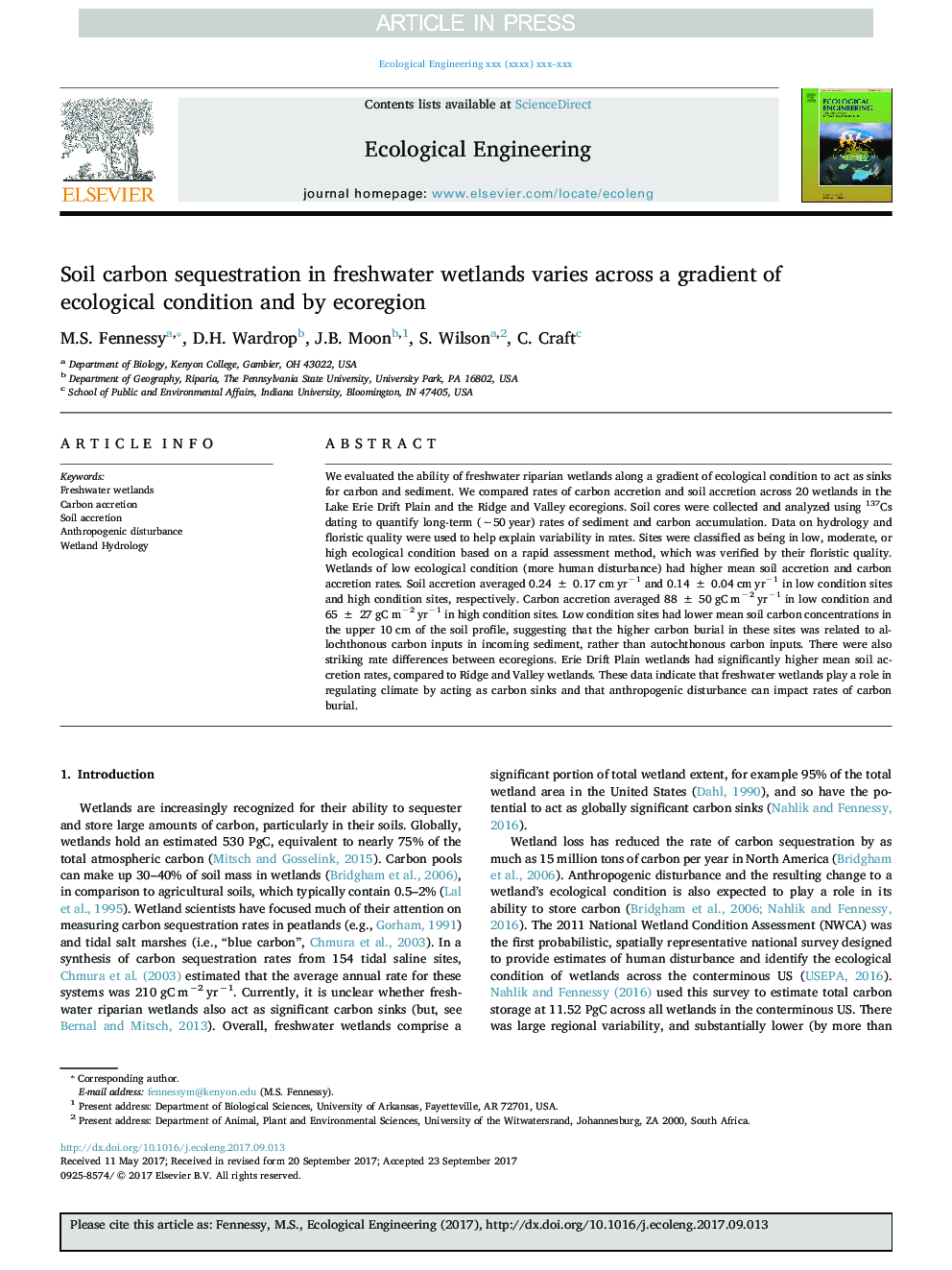| Article ID | Journal | Published Year | Pages | File Type |
|---|---|---|---|---|
| 8848002 | Ecological Engineering | 2018 | 8 Pages |
Abstract
We evaluated the ability of freshwater riparian wetlands along a gradient of ecological condition to act as sinks for carbon and sediment. We compared rates of carbon accretion and soil accretion across 20 wetlands in the Lake Erie Drift Plain and the Ridge and Valley ecoregions. Soil cores were collected and analyzed using 137Cs dating to quantify long-term (â¼50 year) rates of sediment and carbon accumulation. Data on hydrology and floristic quality were used to help explain variability in rates. Sites were classified as being in low, moderate, or high ecological condition based on a rapid assessment method, which was verified by their floristic quality. Wetlands of low ecological condition (more human disturbance) had higher mean soil accretion and carbon accretion rates. Soil accretion averaged 0.24 ± 0.17 cm yrâ1 and 0.14 ± 0.04 cm yrâ1 in low condition sites and high condition sites, respectively. Carbon accretion averaged 88 ± 50 gC mâ2 yrâ1 in low condition and 65 ± 27 gC mâ2 yrâ1 in high condition sites. Low condition sites had lower mean soil carbon concentrations in the upper 10 cm of the soil profile, suggesting that the higher carbon burial in these sites was related to allochthonous carbon inputs in incoming sediment, rather than autochthonous carbon inputs. There were also striking rate differences between ecoregions. Erie Drift Plain wetlands had significantly higher mean soil accretion rates, compared to Ridge and Valley wetlands. These data indicate that freshwater wetlands play a role in regulating climate by acting as carbon sinks and that anthropogenic disturbance can impact rates of carbon burial.
Related Topics
Life Sciences
Agricultural and Biological Sciences
Ecology, Evolution, Behavior and Systematics
Authors
M.S. Fennessy, D.H. Wardrop, J.B. Moon, S. Wilson, C. Craft,
